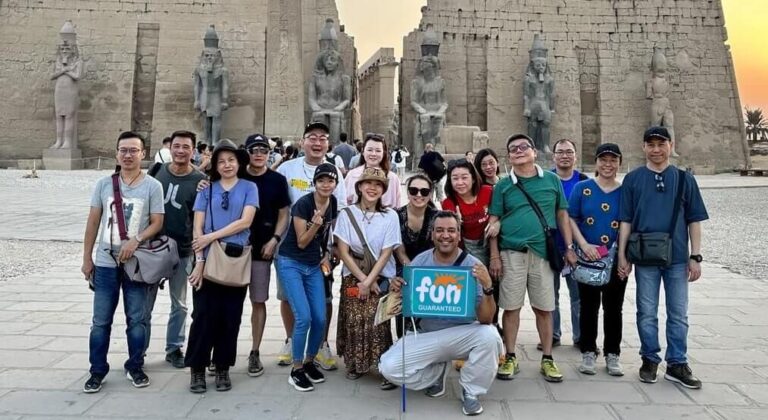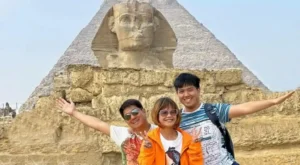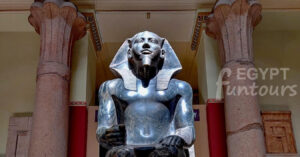Ancient Egyptian Pyramids Facts
Delving into the realm of ancient Egyptian pyramids facts unveil a world of mystery, symbolism, and awe-inspiring achievements that continue to intrigue and inspire to this day. Join us on a journey through the captivating facts that illuminate the timeless wonder of the ancient Egyptian pyramids.
Before we talk about the ancient Egyptian pyramids, let’s learn how ancient Egyptians built them. The first stage in constructing a pyramid was choosing a suitable location. Builders had to choose a location on the west bank of the Nile because the sun set there and the deceased were thought to reach the underworld from the west. They also needed to build the pyramids on high ground to avoid potential floods from the Nile.
The location also couldn’t be too far from the riverbank, because workers used the river to transport blocks of high-quality limestone for the outer casing from Tura, on the opposite side of the Nile. The proposed location would be on the desert plateau, where there would be a strong rock base capable of bearing the pyramid’s massive weight without breaking. It would also have to be close enough to the capital for the king to view the construction progress anytime he wanted.
Memphis City
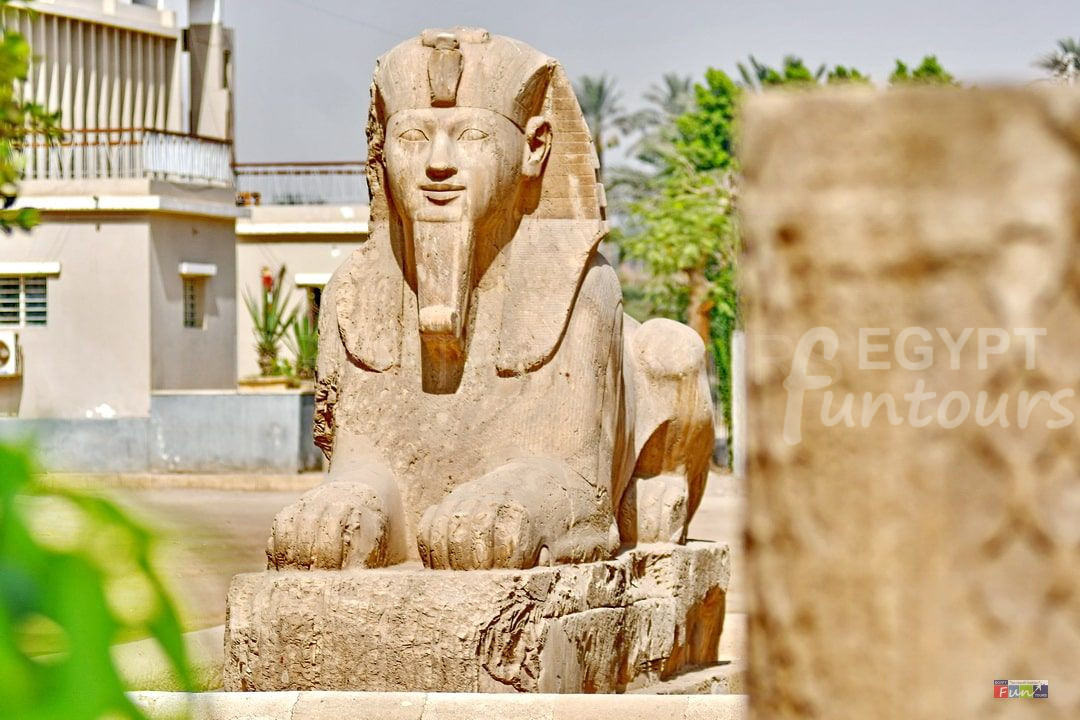
Some of Cairo’s earliest buildings date back to the Greco-Roman period, over two centuries BC; nevertheless, the Giza Pyramids are the most renowned and oldest of Egypt’s pyramids. Despite their proximity to Cairo, the difference in time between the construction of the pyramids and the city itself demonstrates that they have distinctive histories.
The pyramids of Giza were part of an earlier city heritage and civilization before Cairo even existed. The ancient Egyptian city of Memphis was the seat of the Old Kingdom (2686–2181 BC) and the birthplace of the Egyptians who constructed the pyramids.
Memphis was the most powerful and well-known city not only in Egypt but also in the entire globe, according to one of the fascinating Egyptian pyramids facts. What made it renowned was the fact that almost 100 pyramids were erected near Cairo alone during that time.
The fact that Cairo is close to Memphis demonstrates how significant Memphis was in ancient Egyptian history. Furthermore, Cairo and Memphis were, and still are, located in the Nile Delta’s upper reaches.
Giza Necropolis
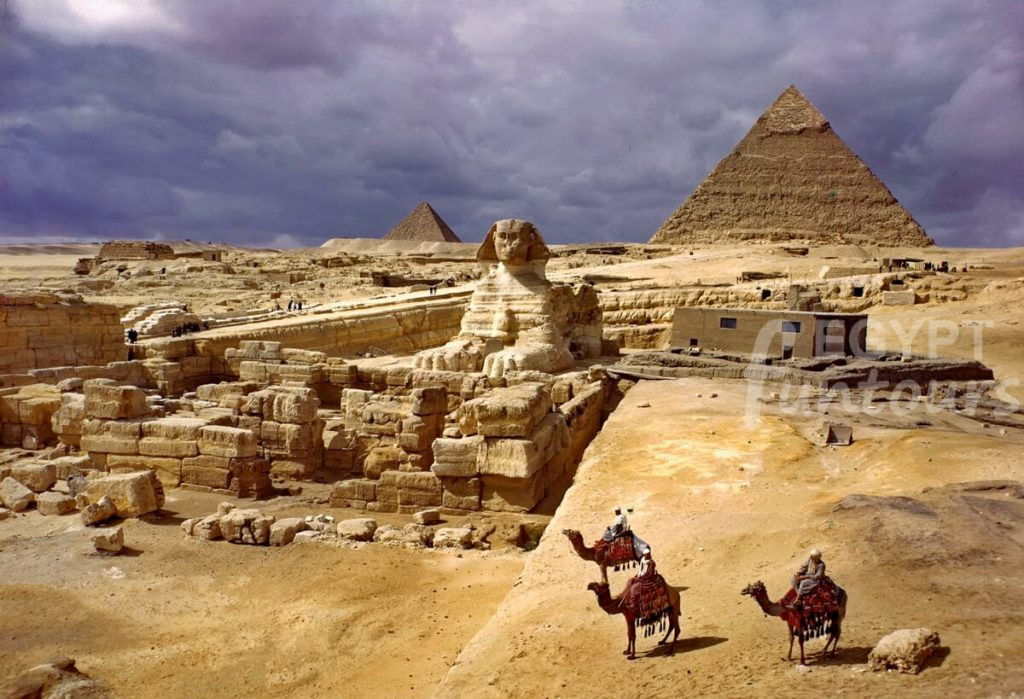
The Giza Pyramids are synonymous with Egypt’s name. The massive scale of the pyramids, particularly those in Giza, has always been and will continue to be an awe factor for millions of tourists that visit Egypt throughout the year.
The element of surprise stems from the fact that everyone who visits Egypt wonders how the three kings, Khafre, Khufu, and Menkaure, were able to construct such massive monuments.
The Great Pyramid of Khufu
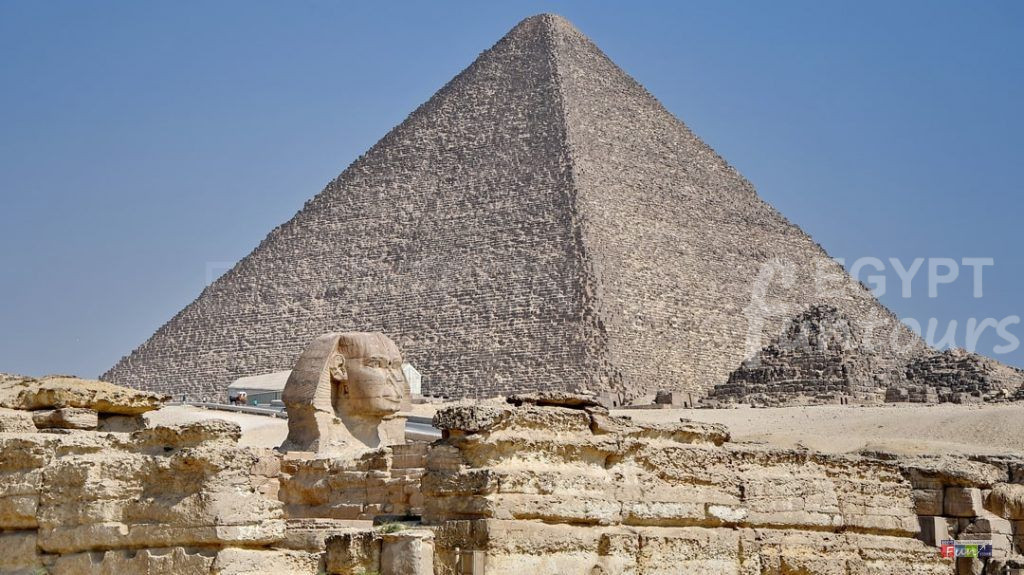
Many interesting facts surround the Egyptian pyramids, such as how the Khufu pyramid, also known as the Great Pyramid of Giza, is one of the Seven Wonders of the Ancient World.
Khafre, Khufu’s son, and King Menkaure are also famous for their magnificent pyramids in Giza, though neither built a pyramid as large as King Khufu’s. Builders constructed the Great Pyramid in 2560 BC; it was originally 481 feet tall, but it has since been reduced to 455 feet after someone removed its magnificent capstone.
Archeologists today see ancient Egyptian buildings such as the pyramids as important indications of Egypt’s economic and political stability throughout the Old and Middle Kingdoms. Building a pyramid took a lot of money and time, as well as a lot of work to find the proper and competent labor force for the job.
The massive size and quality of the structure of pyramids built at different times during Ancient Egyptian history demonstrate that the 4th dynasty had more sophisticated building resources than any previous time.
Chephren Pyramid (Khafre Pyramid)
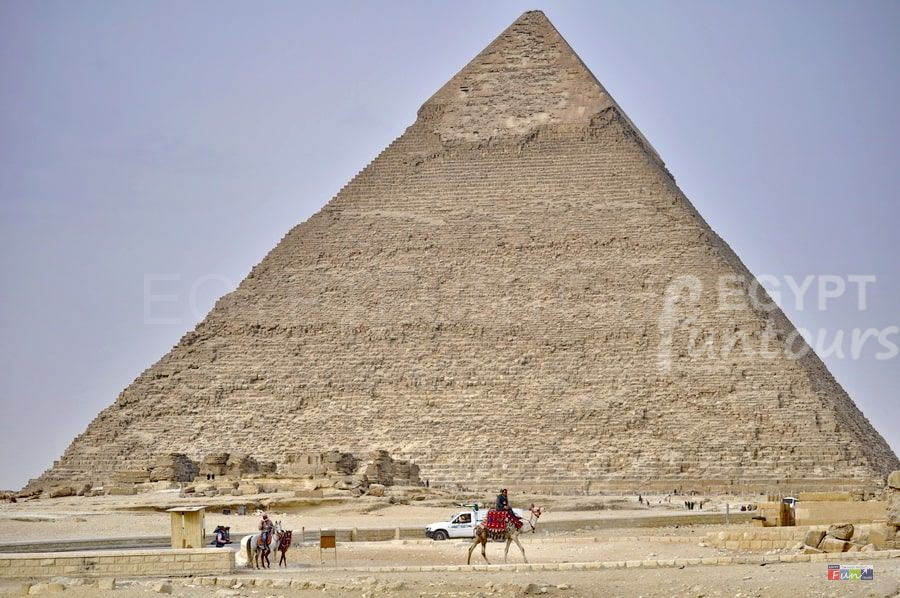
The Khafre pyramid is the second biggest pyramid in Giza. King Khafre, the third pharaoh of Ancient Egypt’s Old Kingdom and a member of the 4th Dynasty (2540 BC), built it. Greeks also referred to the monarch as Chephren.
He was the grandson of King Sneferu and the son of King Khufu, who built the Great Pyramid of Giza. People consider the pyramids King Khafre and his family built during the “golden period” of the Old Kingdom to be the greatest in Egyptian and human history.
The Great Sphinx statue is also one of the most well-known buildings in Egyptian history. Builders constructed it to safeguard the kings’ burial grounds at Giza. The Great Sphinx monument is next to the Valley Temple, which is close to Khafre’s pyramid. Workers discovered a huge statue of the king close to the Great Sphinx monument during an excavation.
Menkaure’s Pyramid (Mykerinus Pyramid)
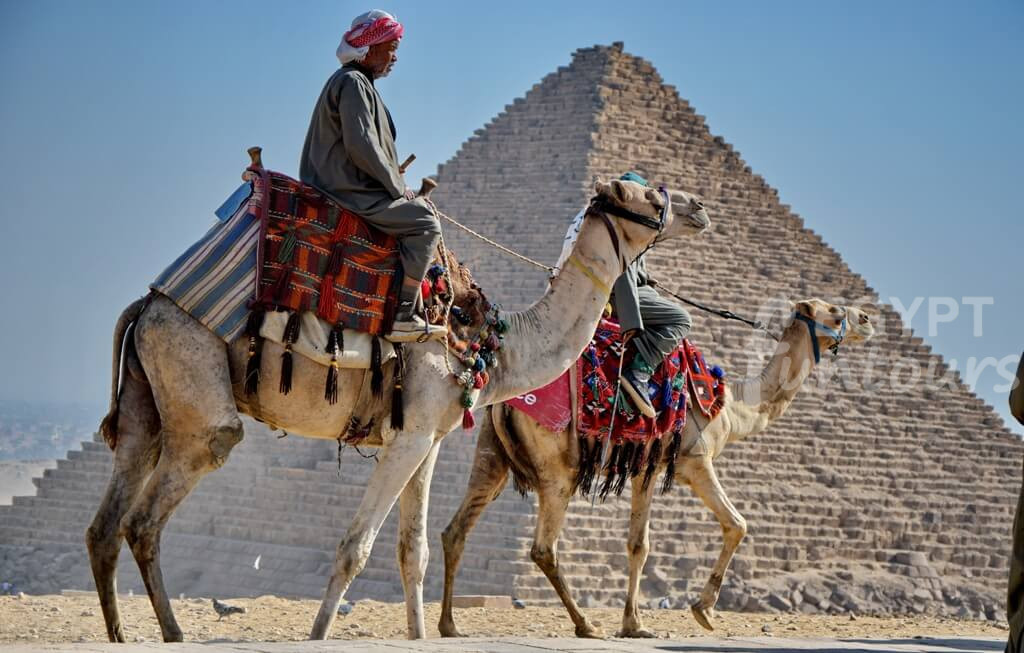
Menkaure’s Pyramid is the third and smallest of Giza’s great pyramids. King Menkaure (Mycerinus in Greek) owns it. Archaeologists think he completed it toward the end of the 26th century BC.
King Menkaure, who ruled during the Old Kingdom’s 4th Dynasty, is believed to be the son of King Khafre, who built the Great Sphinx. The Pyramid of Menkaure originally stood at 215 feet, but it has lost its outer casing and capstone, and is now 204 feet tall. The base of the pyramid was encased in pink granite, while the upper sections were covered with white Tura limestone. This video explores the Pyramid of Menkaure in-depth, including its granite casing and interior chambers.
The Giza Pyramids’ Great Sphinx
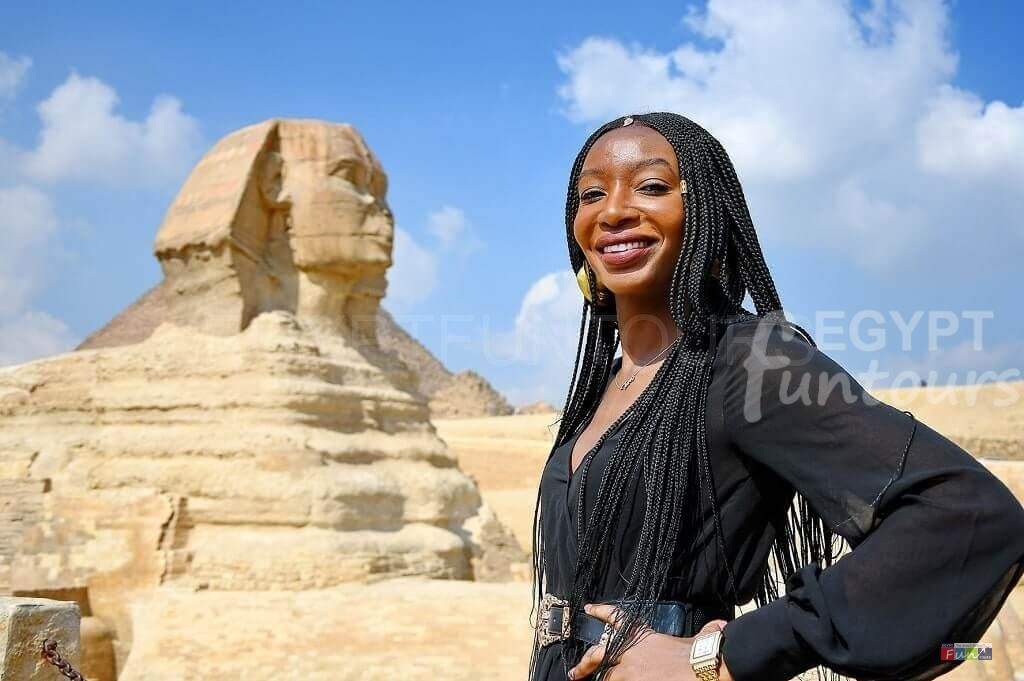
The earliest sphinx statues, with their lion bodies and human heads, first appeared in Egypt’s early dynastic period. These monuments often told a two-sided story. The first depiction of a king as a sphinx statue emerged during the middle of the 4th dynasty. King Djedefre, the successor of King Khufu, was the first ruler to commission a royal sphinx statue.
The sphinx statue, discovered near the Abu-Rawash Pyramid in Giza, is now located in the Louvre Museum. The term “sphinx” comes from the ancient Egyptian name “Ssp Ankhw,” which translates to “living picture.” This mythical creature represents a king’s mental and physical strength. The human head symbolizes his intellect. The lion’s body symbolizes his power. When the sphinx depicts a god, it represents the triumph of human knowledge over the lion’s ferocious nature. This creates a serene, divine figure.
Pyramids of Dahshur
Dahshur is a town about 40 kilometers southwest of Cairo. It is known for its magnificent historical buildings. Excavations have discovered the ruins of seven pyramids. They have also found large tomb complexes. These were for queens and nobles from Memphis. The tombs date through the 13th Dynasty. The Bent Pyramid and the Red Pyramid are at Dahshur. King Sneferu built both. He was the founder of the 4th Dynasty. These pyramids show the amazing structural progress. This progress led to the Great Pyramid of Giza.
The Dahshur Red Pyramid
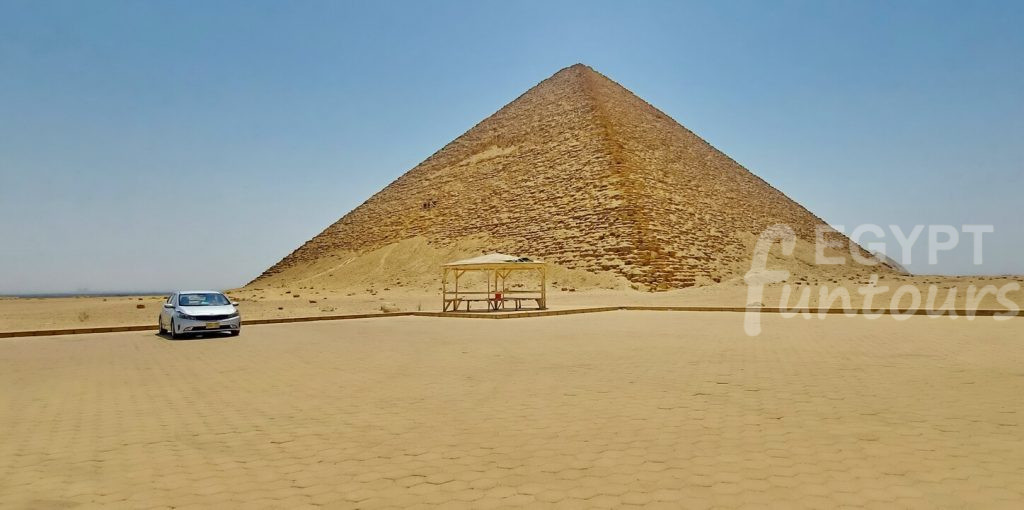
The Red Pyramid is from the 4th Dynasty. Pharaoh Sneferu had it built. The Bent Pyramid is another impressive example. It is located near the Dahshur Necropolis. Sneferu fixed errors on the Bent Pyramid. He also fixed errors on the Meidum pyramid, which collapsed. The Red Pyramid was completed in the early 26th century BC. It was the first successful full pyramid. This inspired the later 4th Dynasty pyramids of Giza.
The Dahshur Bent Pyramid
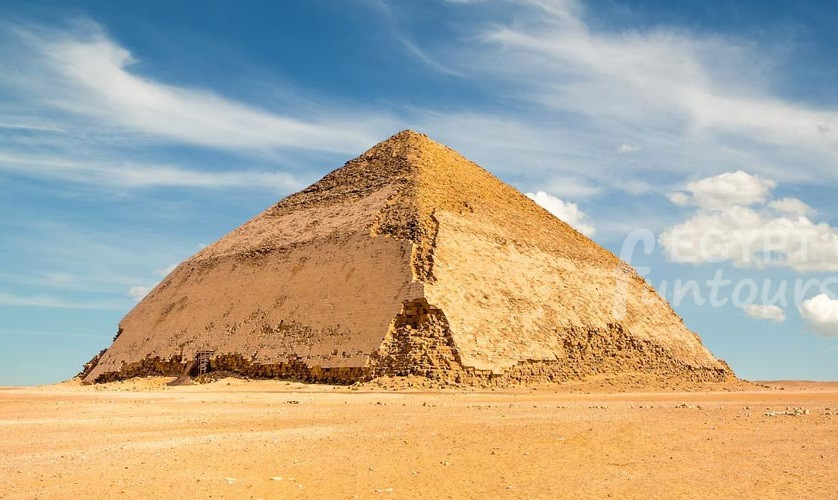
King Sneferu built the Bent Pyramid in Dahshur. This was toward the end of the 27th century BC. Sneferu was the father of King Khufu, owner of the Great Pyramid of Giza. The Bent Pyramid was Sneferu’s first construction. It received its name because it was incomplete and needed repair. The king chose to leave it as is. Discover a variety of Egypt tours that are tailored to your preferences.


